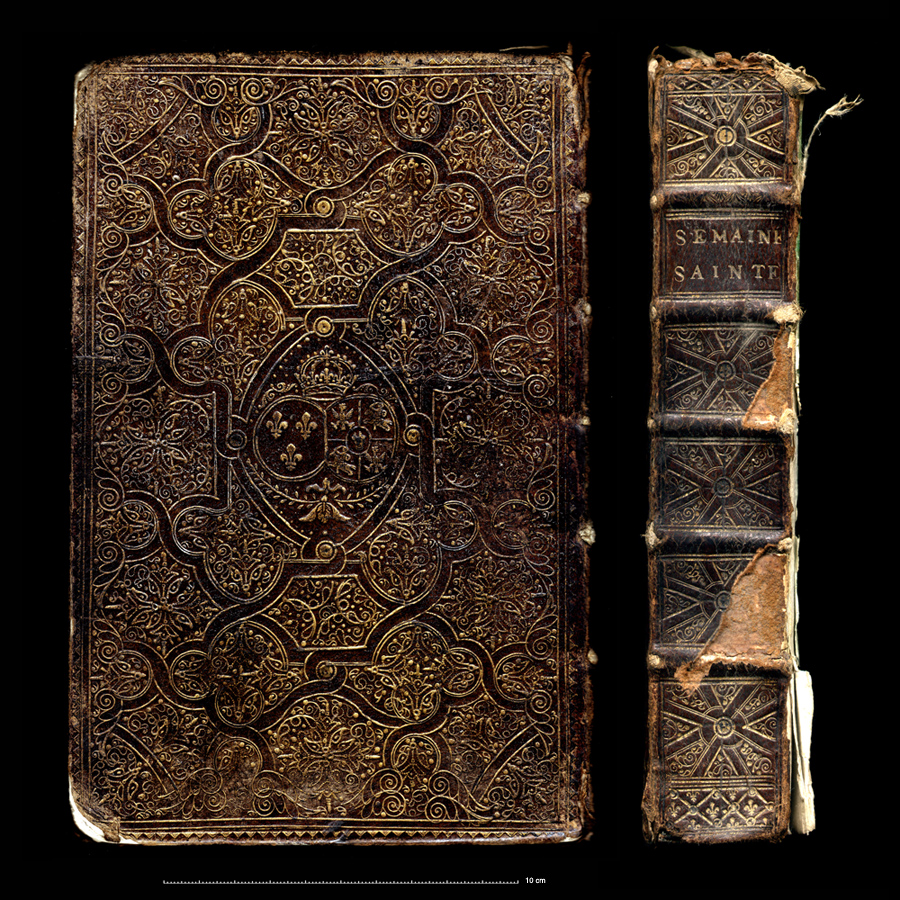

| I discovered this treasure on ebay and thankfully it was almost unrecognizable because the seller's photos were out of focus. And with only one board present and the spine damaged, it did not otherwise draw a lot of attention. For me it was an irresistible treasure, with a rare chance to acquire authentic examples of Padeloup imprints. What is such a binding worth? I was ready to pay a high price but instead, squeezed the other bidders out with a last minute winning bid of 154 euros! There is something much more important about this binding than even the fact that it was made by Padeloup. It is a very rare late fanfare example, that now can be shown to have served, some years later, as a model for a plaque that was almost certainly made by Dubuisson very early in his career. I have devoted a good many web pages to what I have called the "Padeloup plaque" or "Mazieres OSS Model" as it is often found on copies of the Office de la Semaine Sainte, printed Chez la Veuve Mazieres, & Jean-Baptiste Garnier. It is not surprising then that this source for the later fanfare plaques is also found on a Maziere OSS. |
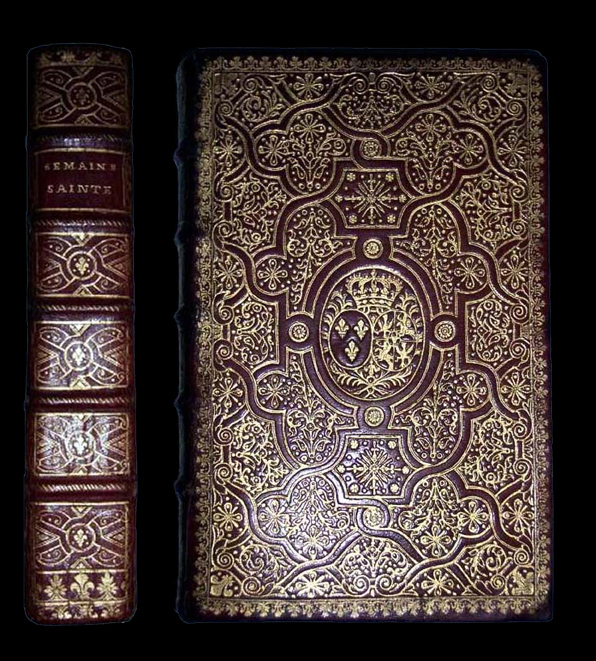
| Now that I have the original 1728 edition as well as a plaque 1728 edition, I notice that there is a difference in size, the plaque binding is about 2 cm smaller yet appears to have the same engraved 1728 title page (engraved by J. B. Scotin). However at the back of the plaque volume we find an "APPROBATION" with a date of Septembre 1739, it is then, a reprint in a smaller size, (smaller margins). I have detailed the "Padeloup Plaque" bindings on a previous page, without knowing that such a Padeloup fanfare binding actually existed. Even given an extensive search of the published literature available, I have never encountered another example. |
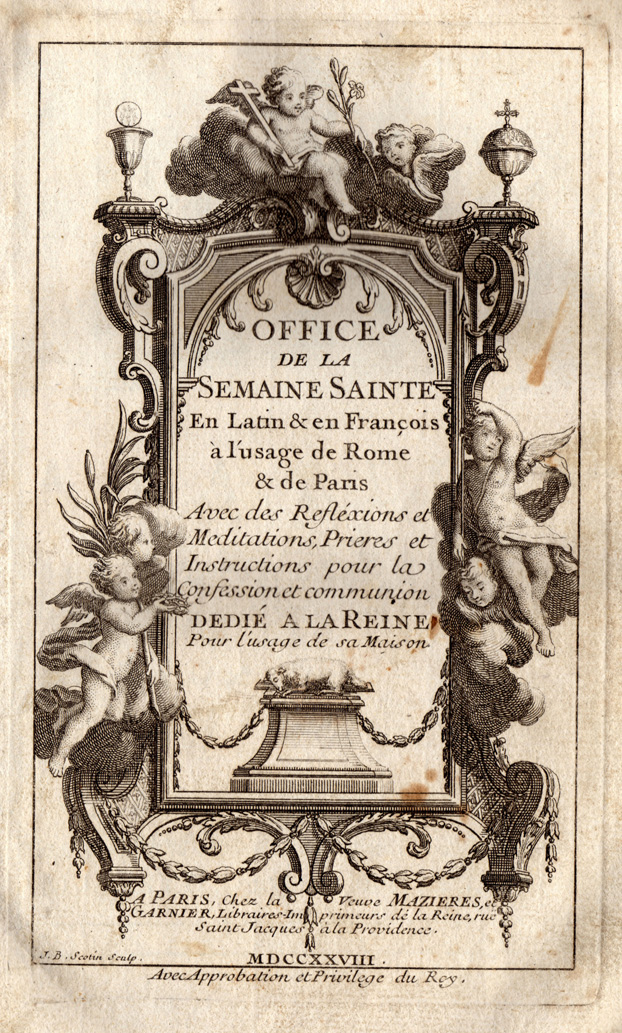
| I am sure someone is going to ask to see some proof that this is actually a Padeloup le jeune binding. On the previous pages I have shown some enlarged diagrams of tool imprints that can be attributed to his workshop. Now I can offer some even higher resolution, comparative diagrams. |
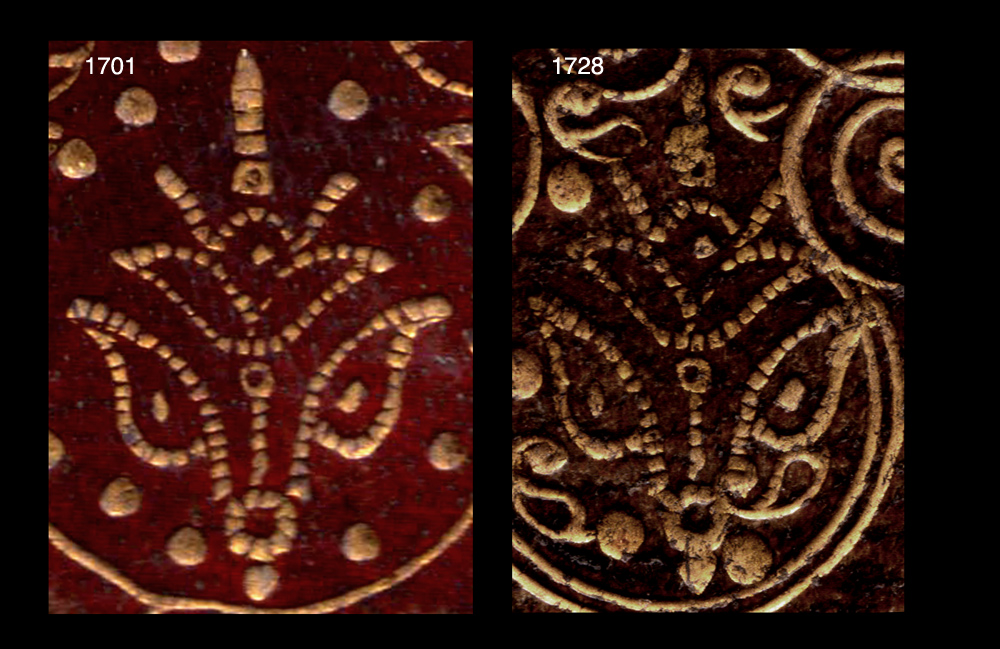
| In Comparative Diagram 1, I compare an enlarged pj-1 imprint from a 1701 example with one taken from this 1728 binding. I have detailed fully the important characteristics this imprint in a previous page (click to see this page) however given this amount of magnification there can be no doubt that these imprints derive from the same tool. |

| In the diagram above I have extracted some of the imprints that I have assigned numbers to in a previous page (click here to see this page). We can see in this enlargement that PALETTE I is in fact made up of small separate tools and is not a single unit. ROLL II is just barely visible on the surface of the raised bands but serves also as an inner dentelle, and is further used to decorate the board edges. |
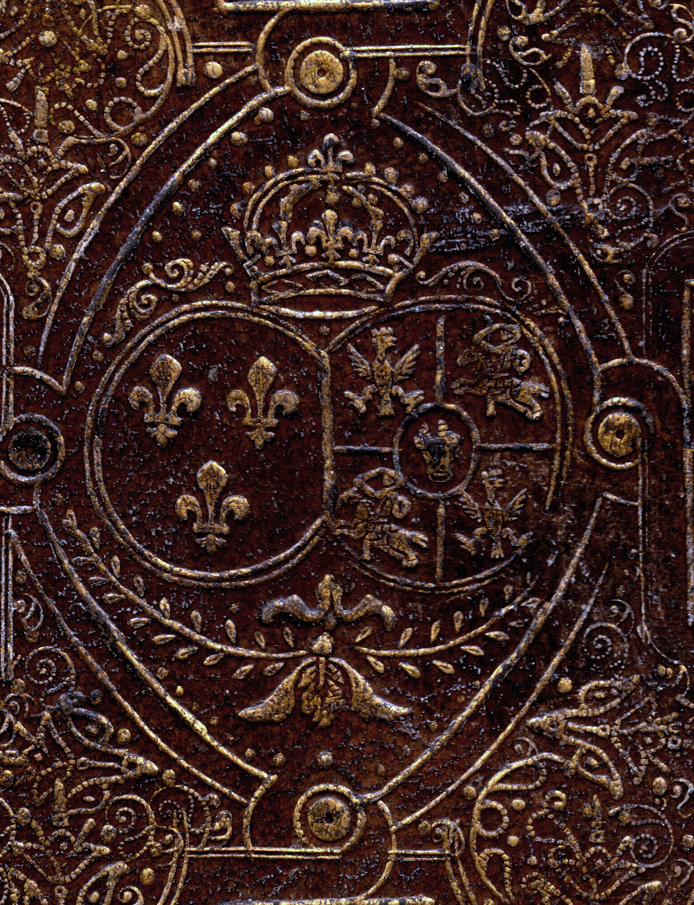
| The next amazing thing we discover is that the armes of Marie LECZINSKA have been made from scratch, with small tools, normally one would expect the Queen to have her own Royal Armes engraved in a single large stamp, below I compare three examples. |

|
Go to the next page Antoine-Michel Padeloup - late fanfare bindings
See also Antoine Michel Padeloup - Imprint Research. Also interesting.... A Comparative study of Pointillé tools from the Atelier of Antoine-Michel Padeloup. |
| Go to Digital Alchemy | return to the home page of cyclopaedia.org |